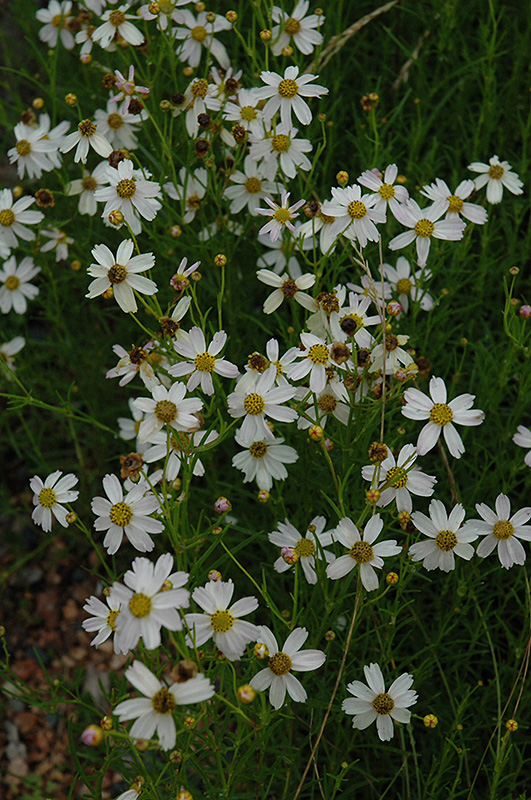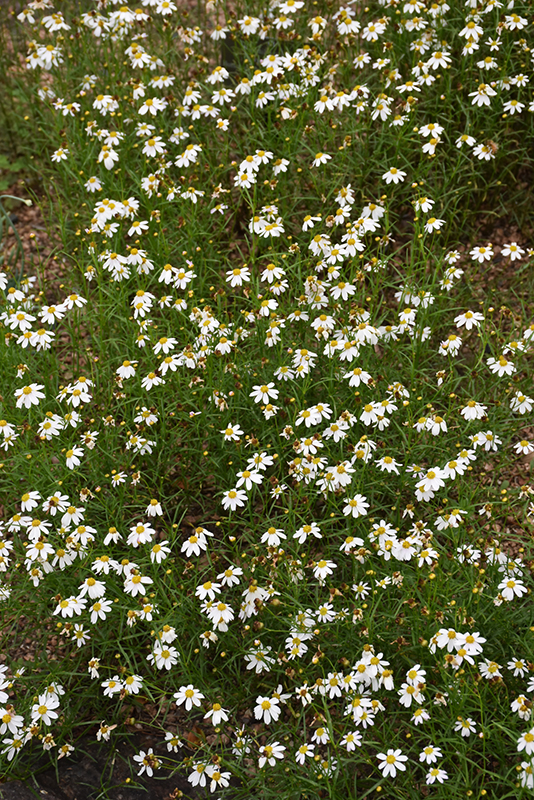White Alpine Tickseed
Coreopsis alpina 'Alba'
Height: 8 inches
Spread: 12 inches
Sunlight:
![]()
Hardiness Zone: 4a
Description:
A sun loving, upright spreading variety that features white daisy-like flowers on green, ferny foliage; ideal for use in garden beds, borders or rock gardens; easy to grow, requiring little to no maintenance
Ornamental Features
White Alpine Tickseed features dainty white daisy flowers with yellow eyes at the ends of the stems from early summer to early fall. Its ferny leaves remain light green in color throughout the season.
Landscape Attributes
White Alpine Tickseed is an open herbaceous perennial with an upright spreading habit of growth. It brings an extremely fine and delicate texture to the garden composition and should be used to full effect.
This is a relatively low maintenance plant, and is best cleaned up in early spring before it resumes active growth for the season. It is a good choice for attracting butterflies to your yard, but is not particularly attractive to deer who tend to leave it alone in favor of tastier treats. It has no significant negative characteristics.
White Alpine Tickseed is recommended for the following landscape applications;
- Mass Planting
- Rock/Alpine Gardens
- Border Edging
- General Garden Use
Planting & Growing
White Alpine Tickseed will grow to be about 8 inches tall at maturity, with a spread of 12 inches. Its foliage tends to remain low and dense right to the ground. It grows at a slow rate, and under ideal conditions can be expected to live for approximately 6 years. As an herbaceous perennial, this plant will usually die back to the crown each winter, and will regrow from the base each spring. Be careful not to disturb the crown in late winter when it may not be readily seen!
This plant should only be grown in full sunlight. It is very adaptable to both dry and moist growing conditions, but will not tolerate any standing water. It may require supplemental watering during periods of drought or extended heat. It is not particular as to soil pH, but grows best in poor soils. It is somewhat tolerant of urban pollution. This is a selection of a native North American species. It can be propagated by division; however, as a cultivated variety, be aware that it may be subject to certain restrictions or prohibitions on propagation.
Disclaimer - This Plant Finder tool is an online resource representing many of the varieties that we carry over the course of the season, and is intended for informational purposes only. Inventory varies seasonally, so we cannot guarantee that every plant will be in stock at all times - please contact the store directly for current availability. It does not include our entire selection of plants, so be sure to visit our store to see varieties that may not be represented on this list.


